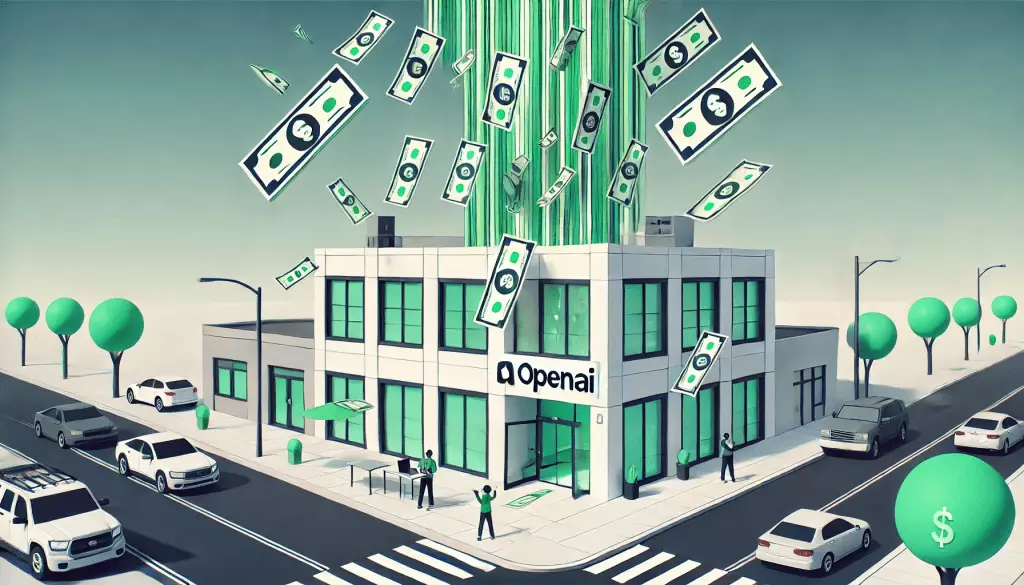OpenAI has recently made headlines by announcing an unprecedented funding round of $6.6 billion, resulting in a staggering total valuation of $157 billion. This funding round, reported to be the largest venture capital infusion in history, has brought both excitement and skepticism from various stakeholders in the tech community. With this substantial influx of capital, OpenAI aims to reinforce its dominance in frontier AI research, increase computational capabilities, and enhance its suite of tools designed to tackle complex challenges. However, beneath this celebratory exterior lies a tapestry of cautionary tales and looming competition that suggests this is a pivotal moment for the company.
Despite the impressive funding achievement, OpenAI’s recent history has been marred by significant executive departures. The resignations have raised eyebrows concerning the company’s stability and long-term strategy. Critics argue that these departures signal deeper issues within the organization, pointing to a potential crisis of leadership. This situation is exemplified by Ed Zitron, a keen observer of tech industry dynamics, who voiced skepticism in his latest newsletter, branding OpenAI as “a bad business.” He underscored the concerning $500 million investment from Softbank, an entity previously tied to high-profile failures like WeWork, suggesting a pattern of questionable financial decisions.
The mixture of skepticism surrounding OpenAI’s plans and the larger narrative of executive exits raises fundamental questions about the company’s direction. Are they truly committed to advancing the AI landscape, or are they merely trying to maintain their market position against burgeoning competition? While funding is essential, it cannot mask underlying operational vulnerabilities.
Competitive Landscape: An Emergency Response or a Remarkable Adaptation?
OpenAI’s announcement included intriguing revelations about an exclusive agreement tied to the funding. Reports indicated that investors were restricted from funding rival entities such as Anthropic, founded by former OpenAI researchers, and Musk’s own xAI. This maneuver suggests that OpenAI is taking proactive steps to safeguard its market share amidst intensifying rivalry. With tech giants like Google, Meta, and Alibaba releasing their AI models and open-source alternatives, the pressure is mounting for OpenAI to innovate and recalibrate its strategy continuously. This context brings contradictory narratives to the forefront: while OpenAI has proved successful at creating top-performing AI models, the landscape is rapidly evolving with fresh entrants that challenge its supremacy.
Moreover, the emergence of Liquid AI’s non-transformer-based models presents an entirely new paradigm in AI development, indicating that traditional methodologies may soon be overshadowed. Therefore, one can argue that OpenAI’s current funding triumph may serve as a tactical retreat rather than an unfiltered victory, potentially signaling an impending battle for market leadership.
OpenAI’s financial windfall is likely to enhance its operational capabilities and foster innovation, but a critical observer might ponder whether this success translates into sustainable revenue sources. Currently, OpenAI’s business model hinges heavily on subscriptions to ChatGPT rather than licensing fees or API usage, which raises concerns about its reliance on a single income stream. As more competitors emerge with diverse monetization strategies, OpenAI cannot afford to be complacent.
Furthermore, the success of OpenAI’s custom Build-a-GPT Store could play a pivotal role in shaping its revenue landscape. Although there has been talk of revenue sharing for creators of custom GPTs since the platform’s launch, there remains a lack of clarity and substantial follow-through regarding payments to these developers. This ambiguity poses another question: will OpenAI leverage its recent funding to offer more equitable revenue opportunities for creators, or will it continue to prioritize its internal objectives?
While OpenAI’s recent funding round is undoubtedly a landmark event within the venture capital sphere, it embodies a complex interplay of triumph and apprehension. The monumental financial support could enable the firm to innovate further and solidify its standing in the AI sector, yet it also amplifies existing critiques surrounding its business model and sustainability.
As investments pour in and new technologies surface, the AI battlefield becomes more competitive. OpenAI is armed with cash, but the real test lies in its ability to navigate through the challenges posed by rivals and maintain its relevance in a rapidly shifting environment. The coming months will likely reveal whether this funding marks a meaningful turning point for OpenAI or if it merely reinforces a status quo that is rife with uncertainties. The sustained vibrancy of the AI sector depends not only on financial support but also on proactive management and a willingness to adapt in an ever-evolving landscape.


Leave a Reply